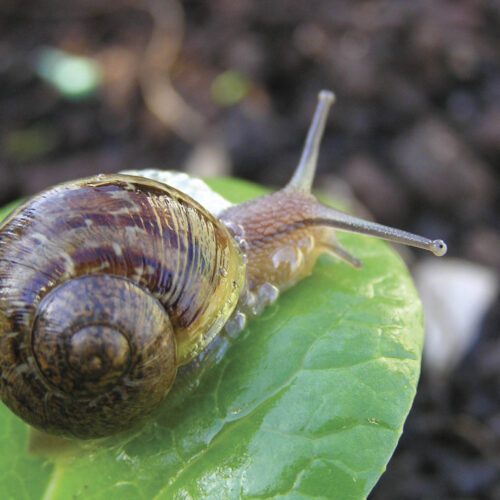Full moon rising
2015-07-31T03:03:07+10:00
Here's an up-to-date 2017 moon planting chart, produced by Lyn Bagnall and for sale at Aussie Organic Gardening. Lyn's explanatory text shines a silvery light on gardening by the moon. You can also try the Thomas Zimmer Astrological & Moon Planting Guide.
Changeovers
The first guideline or ‘rule’ of traditional moon planting is to avoid sowing seeds, taking cuttings or transplanting seedlings or perennials in the 12 hours up to and after the time of each new moon, first quarter, full moon and last quarter. This moon planting calendar shows the exact time of moon phases. The changing energy during these periods does not produce the best results. However, this is the time to make or turn compost, apply mulch or prepare fertiliser teas.
The waxing moon – new moon and first quarter
In the period between new moon and full moon, the moon is waxing, or gradually increasing in light. During this period sap flow increases in the above-ground parts of plants and favours the sowing of leafy, fruiting and flowering annuals and biennials, with fertile days providing extra help for germination and healing of pruning cuts. These are shown as the ‘best days’ in new moon and first quarter phases of the calendar. These are also the times when liquid fertilisers are absorbed more quickly, when sap flow is high. If you want to encourage growth in a new lawn, mow during waxing moon phases.
While flowering annuals and crops grown as green manures do well when sown in either waxing phase, the new moon phase generally favours the sowing andgrowth of annuals that we grow for leaves or stems, with first quarter phase as a second choice.
First quarter phase favours the sowing of fruiting annuals grown for their seed-bearing parts, but not perennial fruiting plants. Beans and peas, tomatoes, capsicum and sweet corn are all examples of annuals that do well when sown in this phase, with new moon phase as a second choice.
Sap flow is highest in the first quarter phase, making it the ideal time for budding and grafting as good sap flow is essential for success in these activities.
First quarter is also a good phase during the growing season for pruning perennials after spring flowering, pruning citrus trees after harvest, and for light summer pruning of roses. During this phase sap and growth hormones are quickly diverted into lateral buds to stimulate new growth and dieback is less likely in pruned branches.
Naturally, you will get the very best results by only growing annuals that are suited to your climate zone.
Always check the ‘What to Plant and Sow Now’ section in every issue of Organic Gardener magazine.
The waning moon – full moon and last quarter
During full moon and last quarter phases, when the moon gradually decreases in light, sap flow becomes
more concentrated in the root areas of plants. Solid organic fertilisers are applied during the waning moon as they have to be digested by soil organisms before being absorbed by plant roots. If you find lawn mowing tedious, do it during the waning moon when regrowth will be slower.
Barren days during the waning moon are best for harvesting crops that you want to store or dry, and for collecting seeds that you want to save. Barren days are shown as best harvesting and weeding days in the moon planting calendar. Full moon phase is best for sowing root crops and all perennial trees, shrubs, bulbs and vines, and for sowing lawns and laying turf. The reason perennials are grown in this phase is because they have the ability to store carbohydrates and nutrients in their roots in the same way as root crops, and a strong root system is essential for their longevity.
Fruit trees, strawberries and asparagus all belong to this group. We may grow asparagus for its green shoots, but a healthy root crown is necessary for the plant to produce strong spears for up to 20 years. I have also found this phase to be the most successful for striking cuttings, layering and dividing plants, particularly on fertile days. Prune in winter during full moon phase when fast new growth is not required. Sap flow in branches does not cease entirely when plants are dormant and pruning on fertile days helps pruning cuts heal more quickly. Germination rates of seeds are much lower in last quarter phase, which means that weed seeds are also less likely to germinate when soil is disturbed. So this is a good phase for weeding and preparing beds. It is also a good phase for removing suckers and for cutting back rampant growth that you want to discourage, especially on barren or best weeding days.
Don’t be concerned that you have to skip work to sow and plant on specific days. Weekend gardeners can use moon planting methods by preparing punnets or planting areas at weekends and then sowing seed on a fertile day, as it only takes a few minutes to sow enough seed for the average family’s requirements. And it is unusual for there to not be any suitable phases at weekends for gardeners to catch up with planting and pruning.
by Lyn Bagnall






